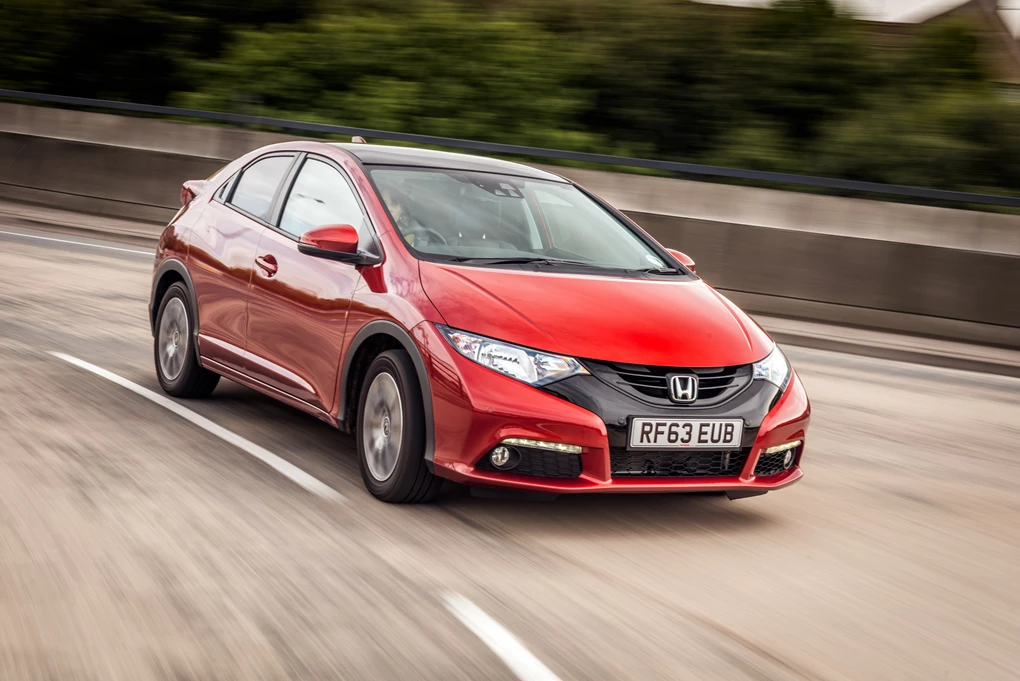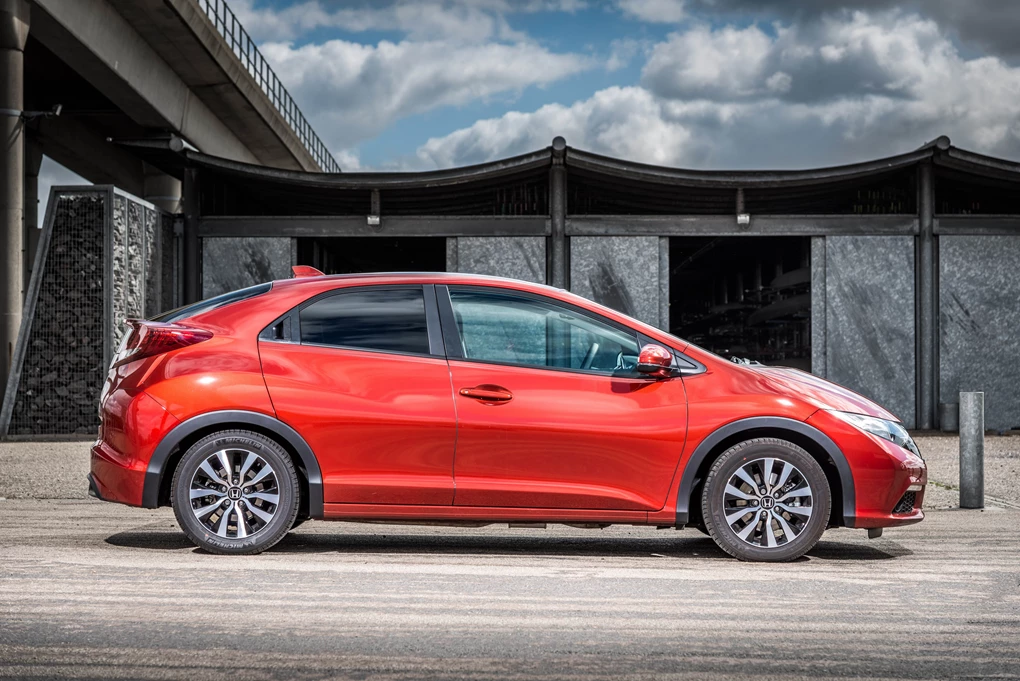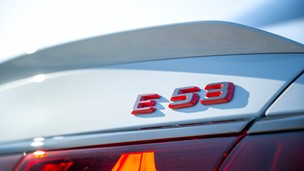With looks like nothing else in the class, the Honda Civic hatchback is somewhat polarising. Honda bosses decided the previous-generation car needed to be bold to shake off the Civic’s dowdy image and attract younger buyers, and the result was a space-age design. The recent facelift for 2015 has made the front-end look even sharper, with a new grille and fog lights.
Most importantly, it boasts a brand-new 1.6-litre diesel engine, an essential option for British buyers looking for the best fuel economy. This, coupled with its practical boot and reputation for reliability give it some strong selling points.
But can something with such a flamboyant design trump the likes of the Volkswagen Golf and Ford Focus?

Performance
The latest engine is also the best. With 118bhp, the 1.6-litre i-DTEC diesel might not sound too powerful, but its impressive torque and brilliant six-speed manual gearbox make it punchy to drive and ideal for motorway trips.
It can go from rest to 62mph in 10.5 seconds, but feels quicker in practice. It’s a little noisy under heavy acceleration, but settles down to a quiet hum at cruising speeds.
Your other options are a 99bhp 1.4-litre petrol and 140bhp 1.8-litre petrol, getting from 0-62mph in 13.4 seconds and 9.1 seconds respectively. The former is really only suited to town driving, needing to be worked hard even at low speeds. It’s smooth and quiet, but lacks grunt.
The 1.8-litre is better, but needs to be worked harder than Volkswagen’s turbocharged 1.4-litre TSI engines, because its power sits high up the rev band.

Ride and Handling
While the Civic doesn’t have the most communicative steering, it’s reasonably sharp off centre, so requires little effort to steer into corners.
While the Civic doesn’t have the most communicative steering, it’s reasonably sharp off centre, so requires little effort to steer into corners. The electric power steering has been reworked slightly though, offering a sharper more responsive feel at higher speeds. Do so and there’s plenty of grip from the tyres, so it always feels safe and predictable. As part of the recent facelift, Honda has added Agile Handling Assist (AHA) which basically helps maximise traction in the corners by applying the brakes when necessary. The suspension set-up has also been tweaked and it is now slightly firmer. But fear not, this slightly stiffer suspension – due to retuned dampers – results in better performance in the corners. This is Honda’s way of trying to match rivals like the Ford Focus, although it’s not quite there yet on an engagement level.
Interior and Equipment
The Honda Civic is built solely in Swindon, Wiltshire and exported all over Europe. Honda Swindon’s first plant was opened in 1992 and was joined by a second in 2001, increasing annual production capacity to 250,000 cars.
Like the outside, the interior is rather marmite, because the Civic’s dual-level dashboard is all a bit futuristic. Instead of a conventional speedo, there’s a digital version just below the windscreen - which we love - but it’s not all perfect. Thankfully, Honda has updated its infotainment system with a more modern-looking Honda Connect system, with some handy features like pinch/swipe on the sat-nav, much like a smartphone. The driving position is fine, but because the fuel tank is below the front seats (don’t worry, it’s perfectly safe), they don’t go quite as low as we’d like. Space in the back seats is good for adults up to around six-feet tall. Moving the fuel tank from its usual position under the boot means the Civic is very practical, with 477 litres of luggage space expanding to 1,367 if you fold the rear seats flat. We particularly like the fact the rear bench can also flip-up against the backrest, creating a useful space between the front and rear seats for pets and taller items. There’s quite a few trims to choose from :S, SE Plus, Sport, SR and EX Plus. Standard features on all models include alloy wheels, air-con and LED daytime-running lights. Standard kit includes Bluetooth, climate control, Honda’s ‘magic seats’ and a CD player. The facelift has brought the Sport to the range which adds a plethora of aesthetic upgrades like 17-inch alloy wheels, a colour-coded rear spoiler and a lower front-grille mesh. A major addition on the safety front is the new City-Brake Assist system, which is now standard across the Civic range. This can pull off an autonomous emergency stop at up to 20mph.
Cost
With an average price reduction across the range of £1,600, the Civic is now closer to its rivals than ever when it comes to price.
Honda has put a lot of know-how into making the Civic affordable to run and the 1.6-litre diesel can return up to 78.5mpg, making it more economical than a standard 1.6-litre Golf TDI, but not as efficient as the 88mpg Golf BlueMotion. Emissions of 94g/km of CO2 are very impressive and make the Civic free to tax. With an average price reduction across the range of £1,600, the Civic is now closer to its rivals than ever when it comes to price, as it now starts from £15,975.
Our Verdict
Sampled in isolation the Honda Civic is an excellent car, with a particularly good 1.6-litre diesel engine and smooth manual gearbox, low running costs, large boot and quirky looks. However, the family-hatchback market is particularly oversubscribed with some of the world’s best cars, Golf and Focus included. Next to the world’s best, the Civic’s dashboard is somewhat confusing and some of the materials feel cheap, while the driving experience is good, rather than great. These facts, coupled with quite a high price, mean the Civic remains an alternative choice rather than a no-brainer.





